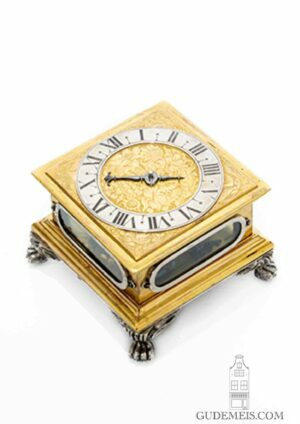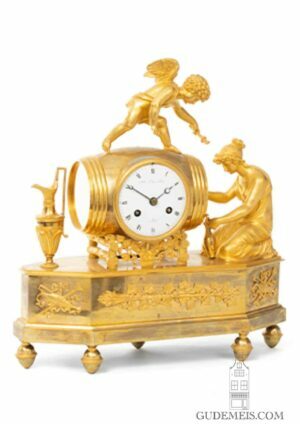A Swiss brass Capucine, circa 1810
Description
The movement
The dial has a diameter of 10 cm, is enamelled, has Roman numerals and has blued steel Breguet hands.
The clock has an 8-day spring-driven movement with anchor escapement and pendulum with silk suspension. The clock has rack half striking with Morbier repeat, repeat on demand and alarm with pull repeat.
The casing
The brass case has a thin bezel and is surmounted by a bell with handle and four urn finials to the corners. The casing has doors to the sides and back and is raised on toupee feet.
The capucine
There are two explanations for the name capucine. The capucine is often seen as a sober Pendule d’officier, so the clock would be named after the sober living Capuchin monks, other sources refer to the hood of the monks that resembles the bell on these clocks.
This model has a typical attractive appearance of the early 19th century capucine clocks: A thin bezel and large dial. In this article you will find more information about the development of the capucine: The development of the French travel clock





